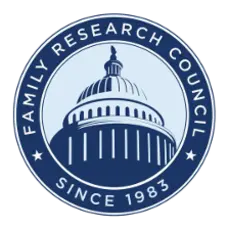The Family Research Council released a pamphlet authored by senior fellow Peter Sprigg about the purported “harm” of marriage equality to American society. Sprigg, who previously said that he wants to “export homosexuals from the United States” because “homosexuality is destructive to society,” discusses the ten reasons he believes that equal rights for gays and lesbians are dangerous, ranging from a “diversity bag” in a Massachusetts school (Reason #2) to the predicted rise of adultery if gays were allowed to marry (Reason #5) and the legalization of polygamy (Reason #10).
First, Sprigg argues that if married gay couples receive health benefits for their families, their relationships would be “subsidized” by the public through entitlement programs. Sprigg finds it deplorable that people would like their spouse or child to receive benefits after they pass away:
Reason #1: Taxpayers, consumers, and businesses would be forced to subsidize homosexual relationships.
One of the key arguments often heard in support of homosexual civil “marriage” revolves around all the government “benefits” that homosexu¬als claim they are denied. Many of these “benefits” involve one thing—taxpayer money that homosexuals are eager to get their hands on. For example, one of the goals of homosexu¬al activists is to take part in the biggest government entitlement program of all—Social Security. Homosexuals want their partners to be eligible for Social Security survivors benefits when one partner dies.
The fact that Social Security survivors benefits were intended to help stay-at-home mothers who did not have retirement benefits from a former employer has not kept homosexuals from de¬manding the benefit.1 Homosexual activists are also demanding that children raised by a homo¬sexual couple be eligible for benefits when one of the partners dies—even if the deceased partner was not the child’s biological or adoptive parent.
Later, Sprigg claims that if gays and lesbians have equal marriage rights, then straight people would be less likely to marry. Why? According to Sprigg, few gay couples would get married if they had the right to, and straight couples would naturally follow their “poor example” and not get married:
Reason #4: Fewer people would marry.
Even where legal recognition and marital rights and benefits are available to same-sex couples (whether through same-sex civil “marriages,” “civil unions,” or “domestic partnerships”), relatively few same-sex couples even bother to seek such recognition or claim such benefits.
…
Couples who could marry, but choose instead to cohabit without the benefit of marriage, harm the institution of marriage by setting an example for other couples, making non-marital cohabitation seem more acceptable as well. If same-sex “marriage” were legalized, the evidence suggests that the percentage of homosexual couples who would choose cohabitation over “marriage” would be much larger than the current percentage of heterosexual couples who choose cohabitation over marriage. It is likely that the poor example set by homosexual couples would, over time, lead to lower marriage rates among heterosexuals as well.
Sprigg also blames marriage equality laws for a fall in the birthrate in certain states, arguing that people would have fewer children if gay couples are allowed to wed. Of course, he uses absolutely no evidence to back up this assertion:
Reason #9: Birthrates would fall.
There is already evidence of at least a correlation between low birth rates and the legalization of same-sex “marriage.” At this writing, five U.S. states grant marriage licenses to same-sex couples. As of 2007, the last year for which complete data are available, four of those five states ranked within the bottom eight out of all fifty states in both birth rate (measured in relation to the total population) and fertility rate (measured in rela¬tion to the population of women of childbearing age).
…
The contribution of same-sex “marriage” to de¬clining birth rates would clearly lead to significant harm for society.





